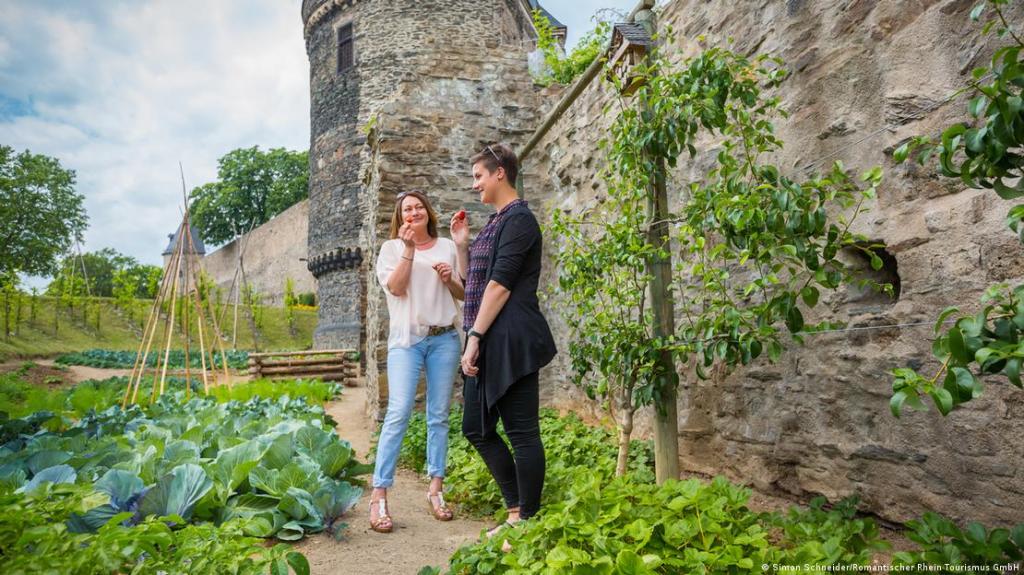
Photo: Suzanne and John’s Mom.
Wild black cherries are edible. They are more pit than pulp, but they taste good.
It’s been a while since I’ve written a post on foraging, but if you search on the word at this site, you will find a few — like the post about the homeless teen who learned life skills from foraging, here.
Lauren Colella has some new thoughts on the ancient art at Sierra magazine: “Summertime for me brings back childhood memories of backyard harvesting. Inspired by books like My Side of the Mountain, I used to search for edible plants: sassafras for tea, wild cherries for pies, and walnuts for snacking. I learned the hard way that walnut juice stains your hands.
“I didn’t know it, but I was participating in the millennia-old act of foraging. The practice is about more than free food and the thrill of the search — it’s an opportunity to engage with local ecosystems and learn more about the species in your area. …
“While today only a few hunter-gatherer groups live off what they hunt and gather, foraging has been a common human practice for hundreds of thousands of years. Members of the working classes depended on it to supplement their diets up until the 1800s. Thanks to these traditions — along with intel from contemporary botanists and mycologists — modern foragers can access extensive catalogs of edibles, often in the form of handy apps like Forager’s Buddy and iNaturalist. Chances are that no matter where you live, you’ll find naturally growing and uncultivated plants, fungi, and insects to eat.
“When scouting spots, be wary of areas near roads or industrial sites that could be contaminated with pollutants, and avoid harvesting plants near farms or lawns likely treated with pesticides and herbicides.
“Start by seeking out commonly found harvestables — like wild onions, berries, and apples — then carefully cut them from the stem or branch and avoid damaging nearby plants or fungi. Be aware that not all wild plants may be consumed raw. Do your research before popping anything into your mouth.
“While many Americans live within walking distance of edible wild plants such as hawthorn berries, yarrow, dandelions, and chickweed, ‘most people have no clue how useful these plants are in terms of food, fiber, and medicine,’ says Lynn Landes, founder of Wild Foodies of Philly. Among the free online resources listed on her organization’s site, Landes names Plants for a Future as a particularly reliable directory, thanks to its extensive descriptions of plants fit for consumption. She also recommends Eat the Planet because it includes details on bugs and mushrooms to eat and avoid.
“Fallingfruit.org maps forageable plants and indicates whether they’re on private or public land. Many universities encourage staff and students to nosh on campus flora. … At the Bay Area’s California School of Traditional Hispanic Herbalism, Charles Garcia passes on wisdom learned from his mother, a curandera (folk remedy healer). Garcia points out that many forageable plants have dual uses, such as stinging nettle, which can be eaten or made into anti-inflammatory salves and extracts, and Pacific blackberry, a tasty plant whose leaves treat diarrhea. …
“Among the Millennial and Gen Z foragers who’ve taken to social media, perhaps the most famous is Alexis Nikole, or @blackforager, an Ohio-based outdoors educator whose Instagram and TikTok feeds abound with recipes and sustainable harvesting guidelines. Nikole touts an “honorable harvest” mindset—collecting only what you need, expressing gratitude by giving back to the earth (like composting), and harvesting only from legally permissible areas. …
“Foraging laws and regulations — generally designed to reduce damage to topsoil and avoid disruption to wildlife and gaps in vegetation where invasive species can flourish — vary by state and dictate what you’re allowed to take. … Volunteering during city parks’ weed-removal days can be a great way to legally source larger quantities of dandelion, mustard, and Japanese knotweed, which are routinely removed before they overpower neighboring plants.”
Check Colella’s Do’s and Don’ts list at Sierra, here, where you can also see her excellent illustrations. No firewall.




